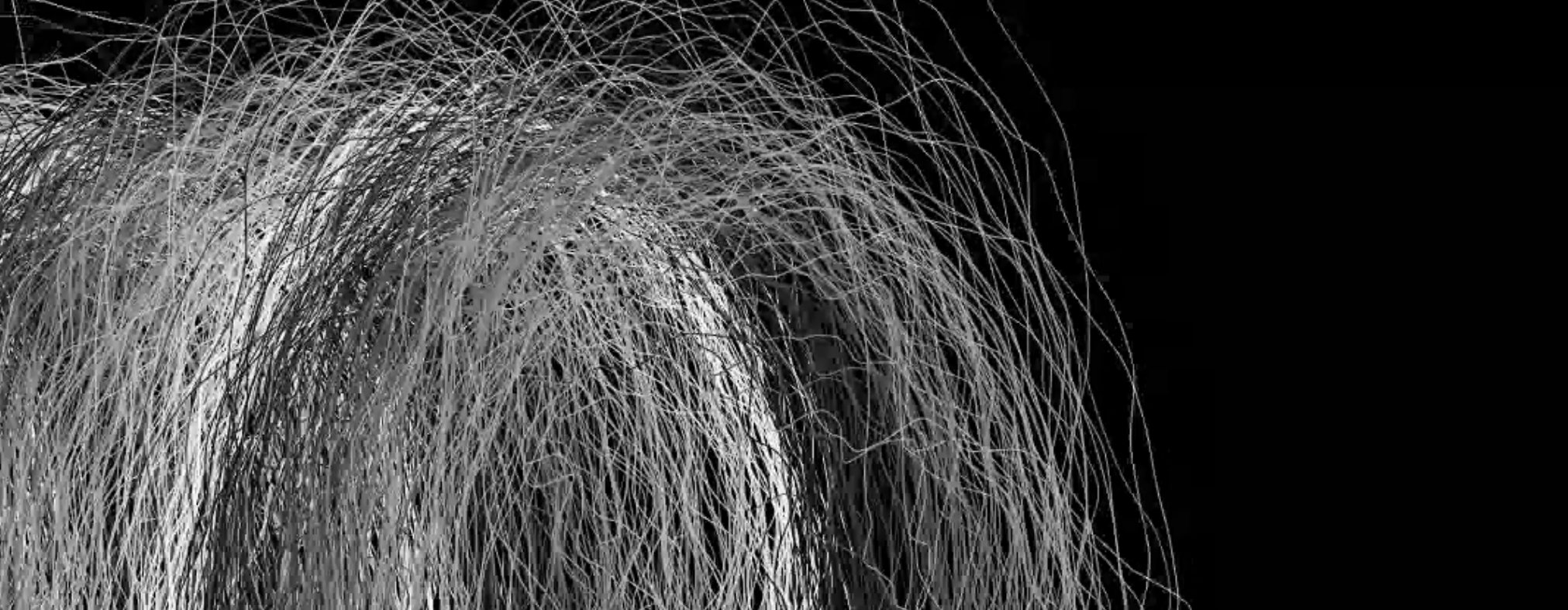
Dr. Prang Tharawanich

Abstract :
- The creator of “Auditory Impressions” invites viewers on a captivating, multisensory journey into the heart of Thai culture. By blending field recordings of distinct Thai sonic environments with abstract, data-driven animations, a triptych of works has been crafted that challenge the visual dominance of traditional art forms.
The foundation of this project lies in meticulous field recordings, where the unique sounds of everyday Thai life – from the sizzling kitchen, atmosphere of a religious shrine, and the rhythmic pulse of a Bangkok train – were carefully captured. Using these raw audio ingredients, the triptych of abstract animations was created, coming alive in active patterns of line, color, and form. Powered by the open-source p5.js coding library, these animations respond dynamically to the evolving soundscapes, blurring the boundaries between audio and visual.
By foregrounding the sensory experience, the aim is to invite viewers to witness the auditory area, shifting their attention away from the visual primacy that often dominates the art world. Inspired by the writings of sound art pioneers like R. Murray Schafer (1994) and Salomé Voegelin (2014), the exploration seeks to understand how the sonic world can serve as a powerful medium for cultural representation and personal connection.
Additionally, the embrace of creative coding and generative techniques aligns with a growing trend in the art world, where artists are leveraging technology to craft innovative new forms of artistic expression. By demonstrating the expressive potential of blending digital works with Thai cultural influences, the hope is that “Auditory Impressions” will serve as a model for how sound-based, interdisciplinary art practices can expand the boundaries of contemporary art (Broussard, 2018; Cox, 2013).
Through this captivating fusion of sound, movement, and cultural identity, viewers are invited to reconsider the ways in which they experience and engage with the world around them. The aim is to challenge their senses and perspectives, opening up new avenues for sensory exploration and artistic discovery.
Objectives :
The primary goal of this project is to introduce audiences to the rich sonic tapestry of Thai culture in a captivating, multisensory way. By translating field recordings of everyday Thai environments into the triptych of abstract, animated artworks, the aim is to challenge the visual dominance of traditional art forms and invite viewers to immerse themselves in the auditory realm.
Additionally, the work aims to position itself within the growing field of creative coding and data-driven art. By leveraging the open-source p5.js library, the hope is to demonstrate how technology can empower artists to craft innovative, interactive experiences that blend digital and analog elements. This project aspires to serve as a model for how sound-based, interdisciplinary art practices can expand the boundaries of contemporary artistic expression.
Ultimately, “Auditory Impressions” invites audiences to reconsider the ways in which sound, movement, and cultural identity can intersect to create compelling, sensory-driven works of art.
Conceptual Framework :
At the heart of this project lies the exploration of how the auditory realm can serve as a powerful medium for cultural representation and personal connection. Inspired by the writings of sound art pioneers like R. Murray Schafer and Salomé Voegelin, the aim is to challenge the visual dominance of traditional art forms and invite viewers to immerse themselves in the sonic world.
Additionally, the embrace of computational tools and generative techniques aligns with a growing trend in the art world, where creatives are leveraging code, algorithms, and data to craft innovative new forms of artistic expression. Theorists like Meredith Broussard and Geoff Cox have provided valuable insights into how the creative use of technology can disrupt conventional art-making paradigms and open up new avenues for artistic exploration.
By synthesizing these interdisciplinary perspectives, “Auditory Impressions” aims to position itself at the forefront of emerging art practices that blend sound, movement, and digital craftsmanship to create captivating, culturally-resonant works of art.
Process / Methodology :
The creation of “Auditory Impressions” began with field recordings of three distinct Thai sonic environments: the sounds of a kitchen during food preparation, the rhythmic pulse of a Bangkok skytrain, and the reverential atmosphere of a religious shrine. These raw audio samples were then meticulously edited and manipulated to serve as the foundational sonic elements for the triptych of animated pieces.
Using the p5.js programming library, the triptych of distinct animation pieces was then crafted, translating the sound recordings into dynamic, data-driven visual expressions. Drawing upon principles of procedural generation, custom code was written that would respond in real-time to the evolving sonic textures, resulting in mesmerizing patterns of line, color, and form. Through an iterative process of experimentation and refinement, the triptych began to take shape, each offering a unique interpretation of the cultural source material.
Techniques and Materials :
The primary technical approach utilized in the creation of “Auditory Impressions” is creative coding, leveraging the open-source p5.js library. As a JavaScript-based programming environment designed for artists and designers, p5.js empowered the translation of the sonic inputs into abstract, data-driven visuals without requiring extensive coding expertise.
The toolkit consisted of a web browser, a text editor, and the p5.js online code editor (https://editor.p5js.org). Through the combination of sound manipulation software and custom p5.js scripts, the dynamic, interactive animations that comprise the final triptych of works were crafted.
Result / Conclusion :
The “Auditory Impressions” triptych offers a captivating exploration of how sound-based, technology-driven art practices can serve as a means of cultural representation and sensory engagement. By translating field recordings of distinctive Thai sonic environments into abstract, procedurally-generated animations, a series of works has been crafted that challenge the visual primacy of traditional art forms and invite the viewer to consider the multisensory nature of aesthetic experience.
The embrace of creative coding, as manifested through the use of the p5.js library, positions this project within a growing trend in the art world where creatives are leveraging computational tools to craft innovative new forms of artistic expression. The ability to blend digital craftsmanship with Thai cultural influences demonstrates the expressive potential of this interdisciplinary approach.
In conclusion, “Auditory Impressions” provides a model for how sound-based, interdisciplinary art practices can serve as a vital conduit for cultural representation, sensory engagement, and the expansion of the contemporary art canon. By foregrounding the embodied, multisensory nature of the viewing experience, the work invites the audience to reconsider the ways in which sound, movement, and perception can intersect to create captivating artistic experiences.
References :
Broussard, M. (2018). Artificial unintelligence: How computers misunderstand the world. MIT Press.
Cox, G. (2013). Speaking code: Coding as aesthetic and political expression. MIT Press.
Schafer, R. M. (1994). The soundscape: Our sonic environment and the tuning of the world. Destiny Books.
Voegelin, S. (2014). Sonic possible worlds: Hearing the continuum of sound. Bloomsbury Academic.